What's New
Displaying results 2381 - 2390 of 4052
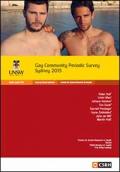
Resource | Publications,
The Sydney Gay Community Periodic Survey is a cross-sectional survey of gay and homosexually active men recruited at a range of gay community sites in Sydney. Since 1996, the project has been funded by the NSW Ministry of Health and supported by ACON and Positive Life NSW. The major aim of the survey is to provide data on sexual, drug use and testing practices related to the transmission of HIV and other sexually transmissible infections (STIs) among gay men in Sydney. The data presented in this report are from the period 2011 to 2015.
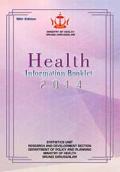
Resource | Publications,
The health information that are published includes data relating to the health status of the nation and are vital in supporting evidence based policy making and planning of health care services in the country. Some of these information also presents key indicators for the national health strategies as well as part of the United Nations Millennium Development Goals and the Sustainable Development Goals. The health data produced also aligns with WHO health statistics – indicator compendium.
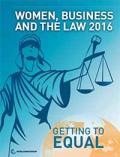
Resource | Publications,
This edition of Women, Business and the Law highlights the World Bank Group’s commitment to generating objective data and building knowledge about gender equality. The report draws on readily comparable data across seven indicators: accessing institutions, using property, getting a job, providing incentives to work, building credit, going to court and protecting women from violence. It expands data coverage to 30 more economies than the previous edition in order to enhance global understanding of laws that affect women’s economic opportunities.
The data reveal the magnitude of the challenge that the world still faces in the quest for gender equality. It seems clear from the evidence that while governments are working progressively to provide equality of opportunity for women, there are still laws that differentiate between women and men in ways that affect women’s economic prospects: of the 173 economies covered, 155 have at least one law that differentiates between women and men. These inequalities impede development, hinder prosperity and undermine national competitiveness.
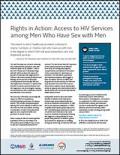
Resource | Publications,
When compared with the general population, men who have sex with men (MSM) are more likely to be HIV-positive but less likely to have access to safe and competently delivered HIV services. In an effort to illuminate the barriers and facilitators of HIV service utilization for MSM, the Global Forum on MSM & HIV (MSMGF) conducted the third biennial Global Men’s Health and Rights Study (GMHR). This brief presents data from the 2014 GMHR describing access to HIV services among MSM and discusses the implications for strengthening the global HIV response.
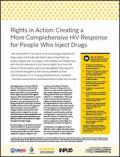
Resource | Publications,
Pervasive stigma, social isolation and harsh criminal penalties for drug use exacerbate the risk of HIV acquisition and impede access to HIV prevention, care and treatment services among people who inject drugs. This brief seeks to help policymakers and program implementers understand and address the HIV needs and human rights of people who inject drugs.
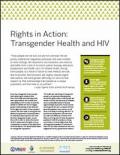
Resource | Publications,
Every day, transgender (trans) people face human rights violations that harm their health and well-being, limit their opportunities, and increase their vulnerability to HIV. In order to meet the ambitious UNAIDS 90-90-90 targets, greater understanding of and attention to the rights and needs of trans people is needed. This brief seeks to strengthen the ability of programmers and policymakers to understand and respond to HIV risks faced by transgender people around the world in order to reduce the burden of HIV in and protect the rights of trans communities.
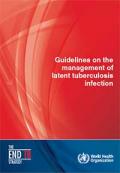
Resource | Guidelines,
These Guidelines on the management of latent tuberculosis infection were developed in accordance to the requirements and recommended process of the WHO Guideline Review Committee, and provide public health approach guidance on evidence-based practices for testing, treating and managing LTBI in infected individuals with the highest likelihood of progression to active disease. The guidelines are also intended to provide the basis and rationale for the development of national guidelines. The guidelines are primarily targeted at high-income or upper middle-income countries with an estimated TB incidence rate of less than 100 per 100 000 population. Resource-limited and other middle-income countries that do not belong to the above category should implement the existing WHO guidelines on people living with HIV and child contacts below 5 years of age.
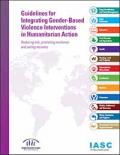
Resource | Guidelines,
Gender-based violence is among the greatest protection challenges individuals, families and communities face during humanitarian emergencies. Accounts of horrific sexual violence in conflict situations—especially against women and girls—have captured public attention in recent years. These violations and less recognized forms of gender-based violence—intimate partner violence, child marriage and female genital mutilation—are also being committed with disturbing frequency. Natural disasters and other emergencies exacerbate the violence and diminish means of protection. And gender-based violence not only violates and traumatizes its survivors, it also undermines the resilience of their societies, making it harder to recover and rebuild.
Despite the scope and severity of the problem, current programming to prevent gender-based violence and provide support for survivors is insufficient to deliver the desired results. The newly-revised Interagency Standing Committee (IASC) Guidelines for Integrating Gender-Based Violence Interventions in Humanitarian Action: Reducing risk, promoting resilience and aiding recovery are designed to address this gap, with clear steps the humanitarian community can take to protect people from gender-based violence.

Resource | Guidelines,
The strategies and action plans developed through consultations build on an increasing collaboration between the government and the civil society organizations, linking the facility-based health services with community level service provision by lay workers, and ensuring the quality of these services through extensive training and capacity building of the community-based organizations and service providers. Ensuring continuum of care between medical and paramedical health facility-based staff and outreach workers requires extensive training in new skills for these workers to be able to perform expanded tasks, adequate support by the health facility staff and smooth referral arrangements.
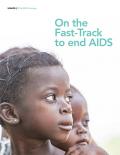
Resource | Publications,
The UNAIDS 2016–2021 Strategy is a bold call to action to get on the Fast-Track and reach people being left behind. It is an urgent call to front-load investments. It is a call to reach the 90–90–90 treatment targets, to close the testing gap and to protect the health of the 22 million people living with HIV who are still not accessing treatment. It is a call to redress the deplorably low treatment coverage for children living with HIV.





